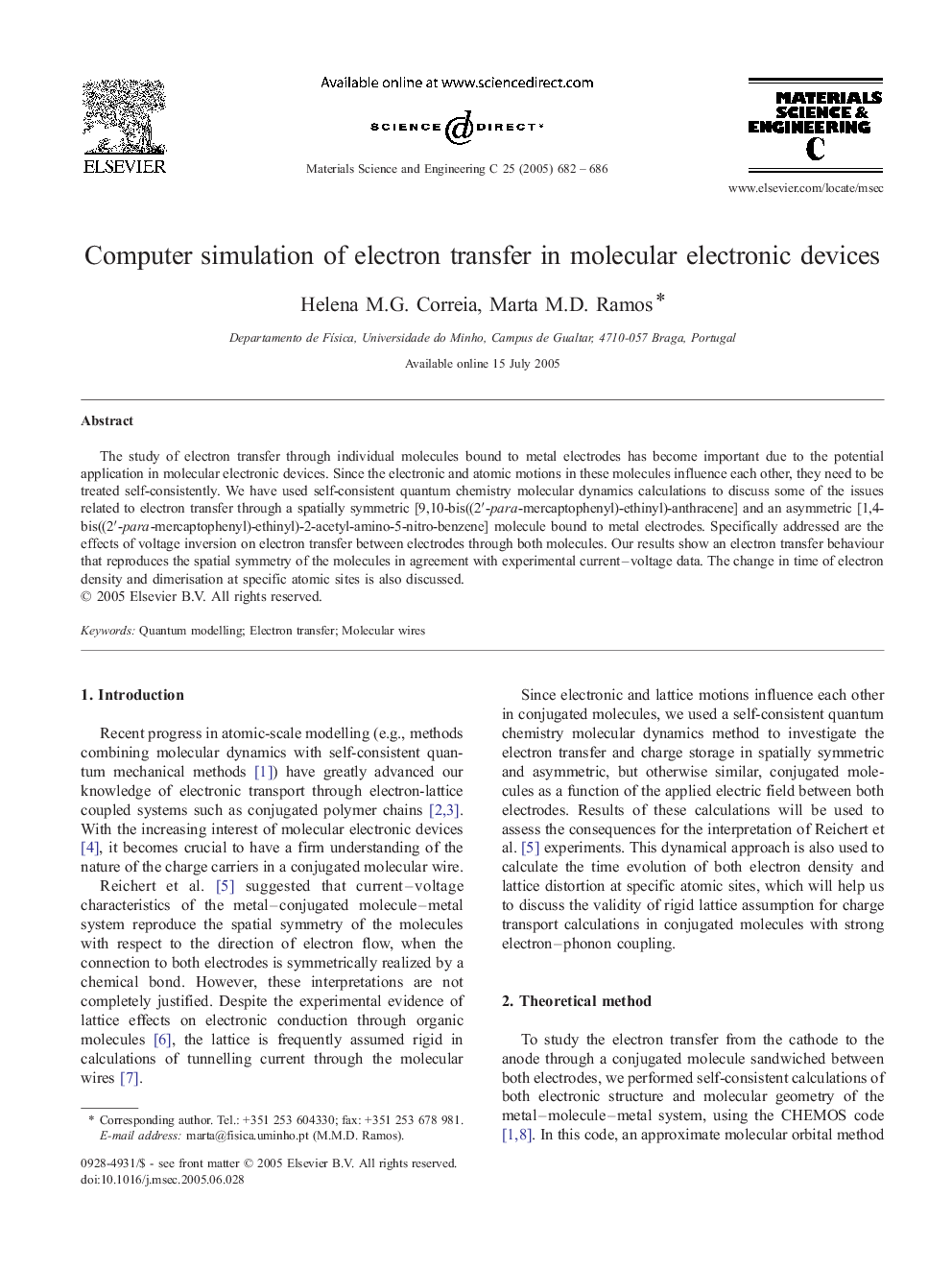| Article ID | Journal | Published Year | Pages | File Type |
|---|---|---|---|---|
| 9775281 | Materials Science and Engineering: C | 2005 | 5 Pages |
Abstract
The study of electron transfer through individual molecules bound to metal electrodes has become important due to the potential application in molecular electronic devices. Since the electronic and atomic motions in these molecules influence each other, they need to be treated self-consistently. We have used self-consistent quantum chemistry molecular dynamics calculations to discuss some of the issues related to electron transfer through a spatially symmetric [9,10-bis((2â²-para-mercaptophenyl)-ethinyl)-anthracene] and an asymmetric [1,4-bis((2â²-para-mercaptophenyl)-ethinyl)-2-acetyl-amino-5-nitro-benzene] molecule bound to metal electrodes. Specifically addressed are the effects of voltage inversion on electron transfer between electrodes through both molecules. Our results show an electron transfer behaviour that reproduces the spatial symmetry of the molecules in agreement with experimental current-voltage data. The change in time of electron density and dimerisation at specific atomic sites is also discussed.
Related Topics
Physical Sciences and Engineering
Materials Science
Biomaterials
Authors
Helena M.G. Correia, Marta M.D. Ramos,
